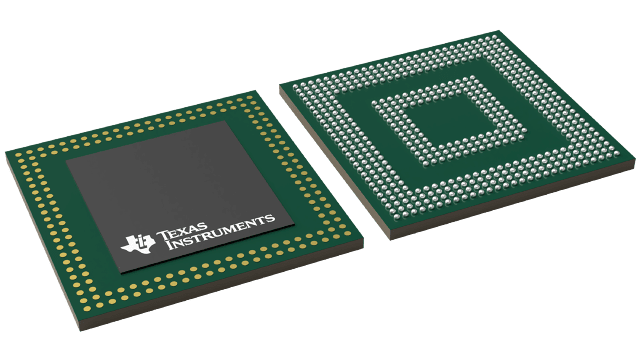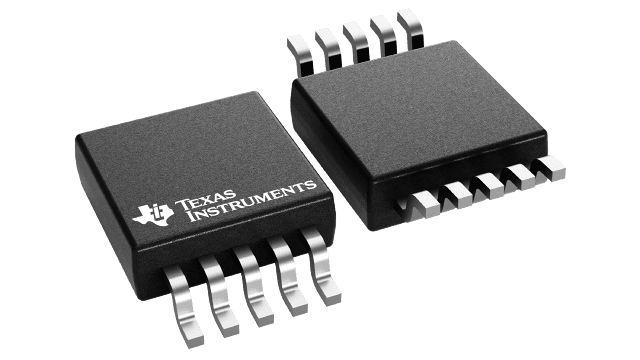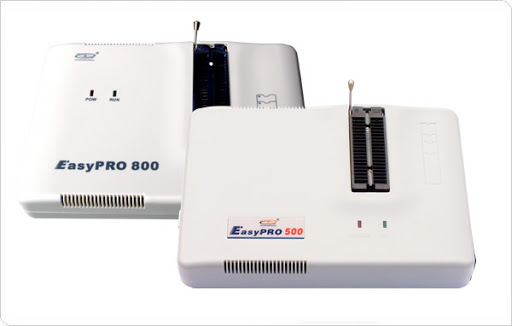description of products:
devices are based on the enhanced OMAP 3 architecture.
The OMAP 3 architecture is designed to provide best-in-class video, image, and graphics processing sufficient to support the following:
- Streaming video
- Video conferencing
- High-resolution still image
The device supports high-level operating systems (HLOSs), such as:
- Linux®
- Windows® CE
- Android™
This OMAP device includes state-of-the-art power-management techniques required for high-performance mobile products.
The following subsystems are part of the device:
- Microprocessor unit (MPU) subsystem based on the ARM Cortex-A8 microprocessor
- PowerVR SGX subsystem for 3D graphics acceleration to support display (OMAP35 device only)
- Camera image signal processor (ISP) that supports multiple formats and interfacing options connected to a wide variety of image sensors
- Display subsystem with a wide variety of features for multiple concurrent image manipulation, and a programmable interface supporting a wide variety of displays. The display subsystem also supports NTSC and PAL video out.
- Level 3 (L3) and level 4 (L4) interconnects that provide high-bandwidth data transfers for multiple initiators to the internal and external memory controllers and to on-chip peripherals
The device also offers:
- A comprehensive power- and clock-management scheme that enables high-performance, low-power operation, and ultralow-power standby features. The device also supports SmartReflex adaptative voltage control. This power-management technique for automatic control of the operating voltage of a module reduces the active power consumption.
- Memory-stacking feature using the package-on-package (POP) implementation (CBB and CBC packages only)
OMAP35 devices are available in a 515-pin s-PBGA package (CBB suffix), 515-pin s-PBGA package (CBC suffix), and a 423-pin s-PBGA package (CUS suffix). Some features of the CBB and CBC packages are not available in the CUS package. (See Table 1-1 for package differences).
This data manual presents the electrical and mechanical specifications for the OMAP35 applications processors. The information in this data manual applies to both the commercial and extended temperature versions of the OMAP35 applications processors unless otherwise indicated. This data manual consists of the following sections:
- Section 2: Terminal Description: assignment, electrical characteristics, multiplexing, and functional description
- Section 3: Electrical Characteristics: power domains, operating conditions, power consumption, and DC characteristics
- Section 4: Clock Specifications input and output clocks, DPLL and DLL
- Section 5: Video Dac Specifications
- Section 6: Timing Requirements and Switching Characteristics
- Section 7: Package Characteristics: thermal characteristics, device nomenclature, and mechanical data for available packaging
product feature:
- OMAP3 Devices:
- OMAP™ 3 Architecture
- MPU Subsystem
- Up to 720-MHz ARM® Cortex™-A8 Core
- NEON™ SIMD Coprocessor
- PowerVR® SGX™ Graphics Accelerator
- Tile-Based Architecture Delivering up to 1 MPoly/sec
- Universal Scalable Shader Engine: Multi-threaded Engine Incorporating Pixel and Vertex Shader Functionality
- Industry Standard API Support: OpenGLES 1.1 and 2.0, OpenVG1.0
- Fine-Grained Task Switching, Load Balancing, and Power Management
- Programmable High-Quality Image Anti-Aliasing
- Fully Software-Compatible with ARM9™
- Commercial and Extended Temperature Grades
- ARM Cortex-A8 Core
- ARMv7 Architecture
- TrustZone®
- Thumb®-2
- MMU Enhancements
- In-Order, Dual-Issue, Superscalar Microprocessor Core
- NEON Multimedia Architecture
- Over 2x Performance of ARMv6 SIMD
- Supports Both Integer and Floating-Point SIMD
- Jazelle® RCT Execution Environment Architecture
- Dynamic Branch Prediction with Branch Target Address Cache, Global History Buffer, and 8-Entry Return Stack
- Embedded Trace Macrocell (ETM) Support for Noninvasive Debug
- ARMv7 Architecture
- ARM Cortex-A8 Memory Architecture:
- -KB Instruction Cache (4-Way Set-Associative)
- -KB Data Cache (4-Way Set-Associative)
- -KB L2 Cache
- 112KB of ROM
- 64KB of Shared SRAM
- Endianess:
- ARM Instructions – Little Endian
- ARM Data – Configurable
- External Memory Interfaces:
- General Purpose Memory Controller (GPMC)
- 16-Bit-Wide Multiplexed Address and Data Bus
- Up to 8 Chip-Select Pins with 128-MB Address Space per Chip-Select Pin
- Glueless Interface to NOR Flash, NAND Flash (with ECC Hamming Code Calculation), SRAM, and Pseudo-SRAM
- Flexible Asynchronous Protocol Control for Interface to Custom Logic (FPGA, CPLD, ASICs, and so forth)
- Nonmultiplexed Address and Data Mode (Limited 2-KB Address Space)
- General Purpose Memory Controller (GPMC)
- System Direct Memory Access (sDMA) Controller (32 Logical Channels with Configurable Priority)
- Camera Image Signal Processor (ISP)
- CCD and CMOS Imager Interface
- Memory Data Input
- BT.601 (8-Bit) and BT.656 (10-Bit) Digital YCbCr 4:2:2 Interface
- Glueless Interface to Common Video Decoders
- Resize Engine
- Resize Images From 1/4x to 4x
- Separate Horizontal and Vertical Control
- Display Subsystem
- Parallel Digital Output
- Up to 24-Bit RGB
- HD Maximum Resolution
- Supports Up to 2 LCD Panels
- Support for Remote Frame Buffer Interface (RFBI) LCD Panels
- 2 10-Bit Digital-to-Analog Converters (DACs) Supporting:
- Composite NTSC and PAL Video
- Luma and Chroma Separate Video (S-Video)
- Rotation 90-, 180-, and 270-Degrees
- Resize Images From 1/4x to 8x
- Color Space Converter
- 8-Bit Alpha Blending
- Parallel Digital Output
- Serial Communication
- 5 Multichannel Buffered Serial Ports (McBSPs)
- 512-Byte Transmit and Receive Buffer (McBSP1, McBSP3, McBSP4, and McBSP5)
- 5-KB Transmit and Receive Buffer (McBSP2)
- SIDETONE Core Support (McBSP2 and McBSP3 Only) For Filter, Gain, and Mix Operations
- Direct Interface to I2S and PCM Device and TDM Buses
- 128-Channel Transmit and Receive Mode
- Four Master or Slave Multichannel Serial Port Interface (McSPI) Ports
- High-, Full-, and Low-Speed USB OTG Subsystem (12- and 8-Pin ULPI Interface)
- High-, Full-, and Low-Speed Multiport USB Host Subsystem
- 12- and 8-Pin ULPI Interface or 6-, 4-, and 3-Pin Serial Interface
- One HDQ™/1-Wire® Interface
- UARTs (One with Infrared Data Association [IrDA] and Consumer Infrared [CIR] Modes)
- Three Master and Slave High-Speed Inter-Integrated Circuit (I2C) Controllers
- 5 Multichannel Buffered Serial Ports (McBSPs)
- Removable Media Interfaces:
- Three Multimedia Card (MMC)/Secure Digital (SD) with Secure Data I/O (SDIO)
- Comprehensive Power, Reset, and Clock Management
- SmartReflex™ Technology
- Dynamic Voltage and Frequency Scaling (DVFS)
- Test Interfaces
- IEEE 1149.1 (JTAG) Boundary-Scan Compatible
- ETM Interface
- Serial Data Transport Interface (SDTI)
- 12 32-Bit General-Purpose Timers
- 2 32-Bit Watchdog Timers
- 1 32-Bit 32-kHz Sync Timer
- Up to General-Purpose I/O (GPIO) Pins (Multiplexed with Other Device Functions)
- 5-nm CMOS Technologies
- Package-On-Package (POP) Implementation for Memory Stacking (Not Available in CUS Package)
- Discrete Memory Interface
- Packages:
- 1.8-V I/O and 3.0-V (MMC1 Only),
Note: These are default Operating Performance Point (OPP) voltages and could be optimized to lower values using SmartReflex AVS.
ArmCPU1ArmCortex-A8
Arm(max)(Max)(频率)720
CPU32-bit
显示类型1LCD
操作系统Linux,RTOS
等级产品样本
电源解决方案TPS65950,TPS65921
温度范围(C)-40to105,0to90


























 3003988121
3003988121